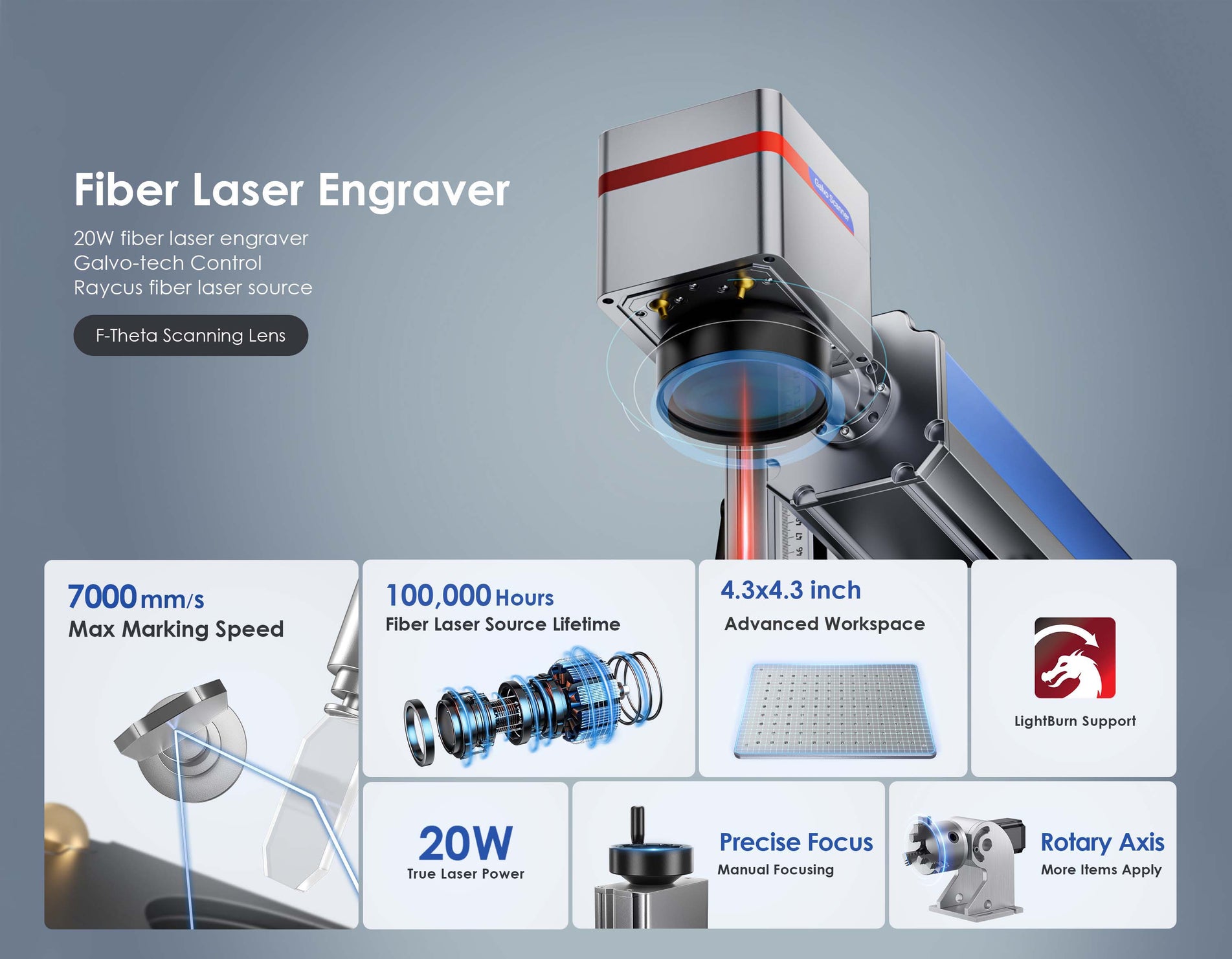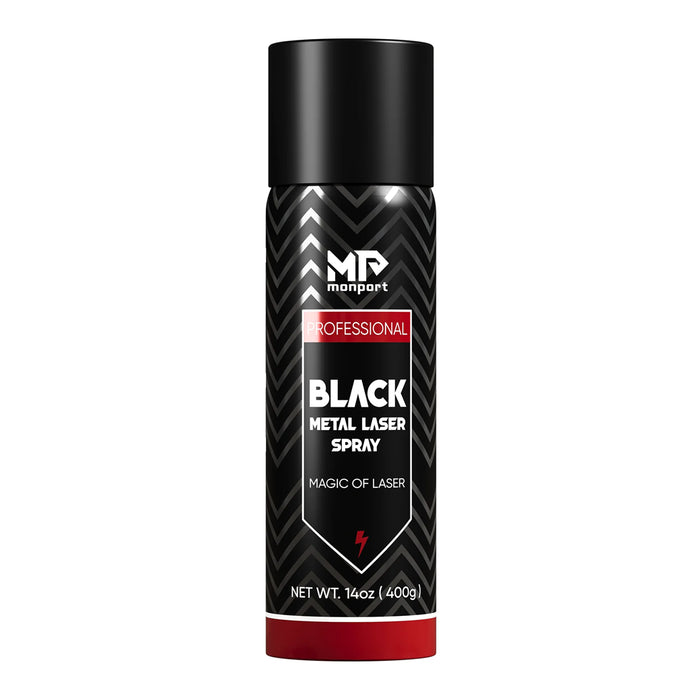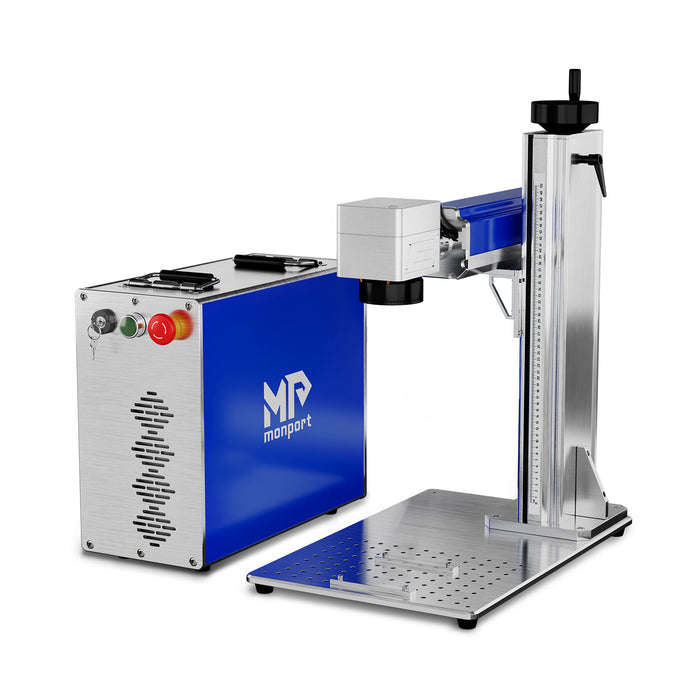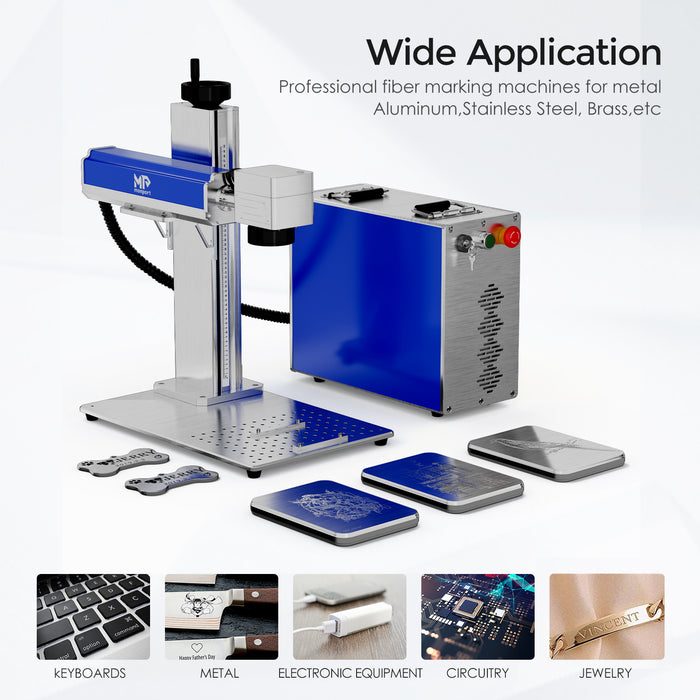Introduction
The fiber laser marking machine is generally designed to meet the needs of marking metal and some hard plastics for many engravers who want to get one. However, a fiber laser marking machine can mark more special materials because of its high powerful feature. For your convenience, this blog will list various materials that can be marked by the Monport fiber markers, along with useful fiber laser bed accessories to enhance the process. Additionally, we'll explore CO2 laser materials suitable for different engraving applications.
Why is fiber laser incompatible with non-metallic materials?
Fiber laser marking machines are recognized metal engraving tools for engraving metals and hard plastics because they use a high-powered laser beam to create a permanent, high-contrast mark on the material's surface. The laser beam is absorbed by the metal or plastic material, causing a localised change in the material's surface that creates the mark. To ensure optimal results, the right fiber laser bed accessories can aid in the efficiency of the process.
Non-metallic materials, such as wood, paper, and fabric, do not absorb the laser energy as effectively as metals and hard plastics. As a result, fiber laser marking machines are not as effective at marking these materials as they are at marking metals and hard plastics. Instead, non-metallic materials are typically marked using other types of lasers, such as CO2 laser materials or UV lasers, which are better suited for these materials. Incorporating the right fiber laser bed accessories can also improve the results when dealing with materials that are harder to mark.
For example, fiber lasers are generally not recommended for marking wood materials because wood has a low absorption rate of laser energy. This means that the laser beam cannot be absorbed as effectively as wood, which may lead to inaccurate and invisible marking. To maximize accuracy, fiber laser bed accessories like focusing lenses or special fixtures can be used.
In addition, wood is a combustible material. If it is exposed to high power fiber laser beam for a long time, it may catch fire. This is because the laser can generate heat. If the heat is concentrated in the concentrated area, it will cause the wood to catch fire. Utilizing fiber laser bed accessories designed to disperse heat effectively can help prevent this issue.
Material Capability
Fiber laser marking machines are versatile tools that can mark a wide range of materials. Some common materials that can be marked with fiber laser marking machines include:
1) Metals
As an engraving machine for metal, the fiber laser can effectively mark a variety of metals including steel, aluminum, copper, brass, gold, silver, and titanium. The high power of fiber lasers allows them to create clear and durable markings on metal surfaces. Enhanced fiber laser bed accessories can help stabilize materials during engraving for precision.
Fiber lasers are highly versatile and can mark a wide range of metals, including:
Stainless steel: A popular metal used in various applications, including cookware, cutlery, medical devices, and aerospace components.
Aluminum: A lightweight, corrosion-resistant metal used in various applications, including automotive parts, electronic enclosures, and consumer goods.
Copper: A highly conductive metal used in various applications, including electrical wiring, plumbing, and jewelry.

Brass: A corrosion-resistant alloy of copper and zinc used in various applications, including musical instruments, decorative objects, and plumbing fixtures.
Titanium: A strong and lightweight metal used in various applications, including aerospace components, medical implants, and sporting goods.
Gold: Fiber lasers can be used to mark a variety of gold products, including jewelry, watches, and other decorative items.
Sliver: Fiber lasers can also mark silver and other precious metals with high precision and contrast. Like gold, silver has a high absorption rate for laser energy, making it an ideal material for fiber laser marking.
Tungsten: Tungsten has a high melting point and is a hard and dense metal, which can make it more challenging to mark using traditional methods. However, fiber lasers can easily mark tungsten due to their high-powered laser beam and ability to create precise marks on hard surfaces. Additionally, CO2 laser materials can be used for non-metal applications, offering versatility in laser engraving.

2) Plastics
Many plastics can be marked with fiber lasers, including PVC, ABS, PET, and polycarbonate. However, the type of plastic and its color can affect the quality and readability of the mark. Using the right CO2 laser materials can enhance the marking process for non-metal plastics, ensuring better precision and clarity.
Fiber lasers are capable of engraving on plastics, including:
Acrylic: A popular thermoplastic material known for its clarity, durability, and impact resistance.
Polycarbonate: A strong, transparent, and lightweight thermoplastic material used in a variety of applications, such as automotive parts, electronic components, and medical devices.
ABS (Acrylonitrile Butadiene Styrene): A thermoplastic polymer that is strong, lightweight, and impact-resistant, commonly used in consumer goods, such as toys, appliances, and electronics.
Polypropylene: A versatile thermoplastic material that is lightweight, flexible, and resistant to chemical and heat exposure. It is commonly used in packaging, medical devices, and automotive parts.
3) Stones
Granite: A hard and durable stone commonly used in construction and home decor.
Marble: A luxurious and elegant stone used in flooring, countertops, and decorative objects.
Slate: A fine-grained, metamorphic rock that is often used for roofing, flooring, and exterior cladding.
Basalt: A volcanic rock commonly used in construction for building facades, flooring, and paving.
4)Ceramics
Fiber lasers can mark ceramics including porcelain, stoneware, and glazed pottery. The marking quality may depend on the type of ceramic and the color of the glaze.
5)Glass
Glass: Fiber lasers can mark glass, including borosilicate glass, without causing damage to the material. The marking quality may depend on the thickness and type of glass.
6)Foods & Leaves
Marking on food is not a special technology of CO2 laser carving machine. High-power fiber laser machine can also be realized. You can engrave on the surface of apples and other fruits, and also on some leaves. Generally, the food that can be engraved is water on the surface and can be marked.
Enhance Your Metal Engraving with Monport Black Laser Marking Spray

Monport black laser marking spray offers a reliable and easy-to-use solution for creating high-contrast, permanent marks on various metals. Compatible with CO2 laser engraving machines, this black laser marking spray provides an excellent finish on materials like aluminum, stainless steel, and brass. With its advanced formula, the spray ensures even coverage and deep penetration into the surface, producing durable marks that are resistant to heat and wear. The black laser marking spray dries quickly, allowing you to complete your projects efficiently. After engraving, simply rinse off the spray to reveal sharp, crisp markings. Monport’s black laser marking spray is the perfect tool for personalizing products, customizing metal items, and creating high-quality industrial markings with ease.
Conclusion
Fiber laser marking machines are effective tools for marking a wide range of materials with high precision and durability. However, it's important to choose the appropriate settings and techniques for each material to achieve the best results. Utilizing the right fiber laser bed accessories ensures efficiency and accuracy in marking, ultimately enhancing the laser's performance when working with CO2 laser materials.











